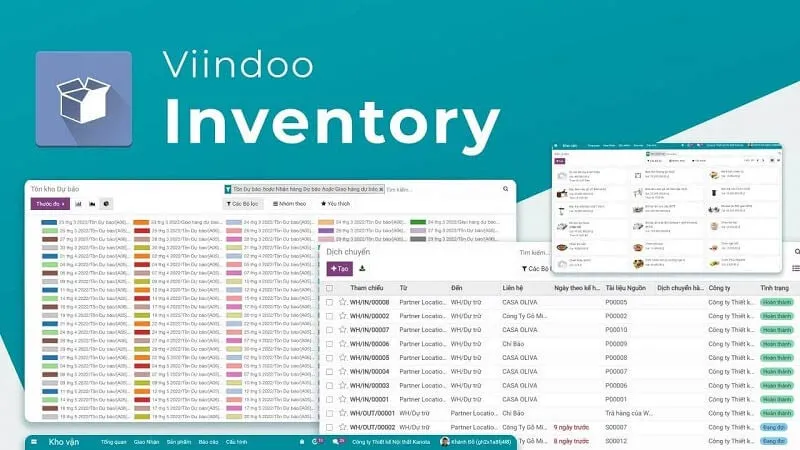Discover the Key to Efficient Inventory Management with our inventory aging Report. Harness the Power of Data Analysis to Optimize Stock Levels and Minimize Costs. Stay Ahead of Obsolete Inventory, Maximize Profitability, and Enhance Cash Flow. Our Innovative Approach Provides Actionable Insights to Drive Strategic Decision-Making. With Inventory Aging, Transform Your Business Operations, Streamline Processes, and Gain a Competitive Edge in the Market. Experience Improved Efficiency and Productivity Through Proactive Inventory Management. Let Us Help You Unlock the Potential of Your Inventory and Achieve Long-Term Success.

Inventory Management
Definition and Importance of Inventory Aging
What is Inventory Aging?
Inventory aging refers to the process of categorizing and analyzing inventory based on how long it has been in stock. It involves tracking the age of inventory items from the time they are received or manufactured until they are sold or disposed of. By classifying inventory into different age brackets, businesses can identify slow-moving or obsolete items, optimize stock levels, and make informed decisions regarding pricing, promotions, and inventory management strategies. Inventory aging helps businesses minimize holding costs, improve cash flow forecast , and maximize profitability by ensuring that inventory turnover is optimized and obsolete inventory is minimized.
Importance of Inventory Aging
Inventory aging plays a crucial role in effective inventory management, offering several significant advantages for businesses. Firstly, it facilitates the identification of slow-moving or obsolete inventory items. By categorizing inventory based on age, businesses can pinpoint products that have been in stock for an extended period, enabling them to take proactive measures such as implementing promotions or adjusting pricing strategies to stimulate sales and prevent excess stock buildup.
Secondly, inventory aging helps optimize stock levels by aligning them with demand patterns and product lifecycle. This ensures that businesses maintain an optimal balance between inventory turnover and safety stock, reducing the risk of stockouts or overstock situations. As a result, businesses can minimize holding costs associated with excess inventory while maximizing profitability.
Furthermore, inventory aging enhances decision-making by providing insights into inventory turnover rates and product demand trends. This allows businesses to make informed decisions regarding purchasing, pricing, and promotions, thereby improving overall inventory management efficiency and effectiveness.
Overall, inventory aging is essential for businesses to maintain lean and efficient inventory operations, optimize cash flow, and ultimately, enhance their bottom line.
How to optimize stock level with Viindoo Inventory Software?
Viindoo Inventory Aging Report is a part of Viindoo Inventory Software, brings the following benefits to businesses:
- Identifying Slow-Moving Inventory: It allows businesses to pinpoint items that have been in stock for an extended period, enabling proactive measures to address them, such as promotions or clearance sales.
- Optimizing Stock Levels: By categorizing inventory based on age, businesses can align stock levels with demand patterns and product lifecycles, reducing excess inventory and associated holding costs.
- Minimizing Holding Costs: By identifying and addressing slow-moving or obsolete inventory, businesses can reduce holding costs like storage fees, insurance, and depreciation.
- Improving Cash Flow Management: Efficient inventory aging analysis frees up cash tied up in slow-moving items, improving cash flow and providing resources for investment in more profitable areas.
- Enhancing Decision-Making: It provides insights into inventory turnover rates and demand trends, empowering businesses to make informed decisions regarding purchasing, pricing, and promotions.
- Preventing Stockouts and Overstock: By maintaining a balanced inventory based on aging analysis, businesses can prevent both stockouts (insufficient inventory) and overstock situations (excess inventory), ensuring optimal product availability while minimizing costs.

Viindoo Inventory Aging Report
In the inventory aging report of Viindoo Inventory Software, detailed information about the items in stock is provided, including:
- Product Information: The report provides detailed information about the items in stock, including product names, product codes, descriptions, and related information.
- Inventory Age Classification: Inventory Age provides information about the age of each item in stock, from the time it was received or manufactured to the current time.The report may categorize inventory into groups based on the age of the items, helping users identify items that may become obsolete or outdated, usually such as 0–30 days, 30–60 days, and 60–90 days....
- Inventory Quantity: The report indicates the specific quantity on hand of each item in stock, helping users understand the inventory status of each product.
- Inventory Value: It provides information about the value of the inventory for each item, allowing users to assess the total value of the inventory.
>>>> See more: ERP Applications in Effective Inventory Valuation
In summary, Viindoo Inventory Aging Report provides detailed and comprehensive information about inventory status, helping users manage and optimize their inventory management processes.
>>>> See more: Inventory Report in Viindoo Inventory Software
Discover Viindoo Inventory Software
The All-in-one Inventory Software for SMEs. Automate your inventory process leading to increased efficiency, accuracy, and ultimately, cost savings.

FAQs
Yes. Viindoo Inventory Aging Report helps users track the stock age of a product to a specific date.
To view these reports, you navigate to Inventory ‣ Reporting, then choose Stock Age report.
Yes. The Viindoo Inventory Aging Report offers a wide range of filters based on criteria and is easy to use.
Conclusion
In conclusion, inventory aging is a vital tool for businesses seeking to optimize their inventory management practices and improve overall profitability. By categorizing inventory based on age, businesses can identify slow-moving or obsolete items, optimize stock levels, and make informed decisions about pricing and promotions. This process helps minimize holding costs, improve cash flow management, and prevent stockouts or overstock situations. Leveraging inventory aging insights enables businesses to maintain a healthy inventory ecosystem, maximize efficiency, and enhance their competitive edge in the market. With proactive inventory aging analysis, businesses can adapt to changing demand patterns and ensure long-term success in today's dynamic business landscape.
